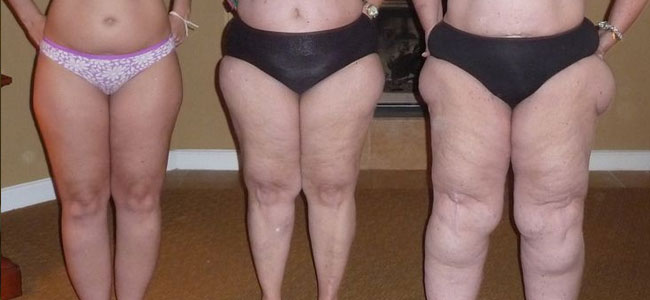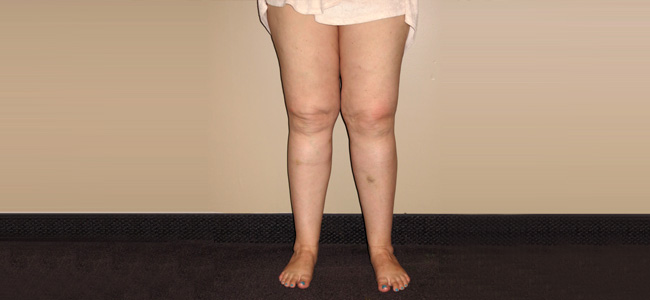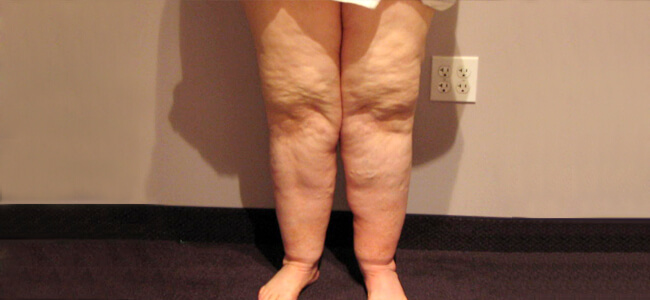Symptoms of Lipedema
As the fat increases, the lymphatic vessels are unable to move the fluids out of the body and the swelling increases. The symptoms include pain, bruising, swelling in the limbs and hypermobility of the joints, with reduced elasticity in the skin and knee. Patients often have flat feet and knee mal-alignment or instability,
Lipedema can occur in puberty or often in the 30′ s and there is a slow progression of symptoms and weight gain, leading to immobility. Lipedema may develop or worsen during pregnancy or surgery
What is Lipedema?
Lipedema is a genetically mediated disorder of fat deposition that occurs almost exclusively in females. There is a symmetrical accumulation of fat in the legs, buttocks and hips that extends down to the ankles. In 70% of cases the swelling occurs in the arms and there is no foot involvement. A “cuff” can be found around the ankles and wrists. Patients often report a family history of “heavy legs”
Lipedema is often called “painful fat syndrome”. The swelling that occurs is due to an excess deposition of fatty tissue and fluid accumulation in the subcutaneous tissue, leaky vessels and fragility of the blood vessels. It is painful to the touch
Lipedema is often misdiagnosed and can be mistaken for regular obesity or lymphedema. The condition can progress to become Lymphedema.Patients are accused of being simply “fat,” which is not the case and is so invalidating and frustrating to the patients.

© 2014-2021. Lipedema Simplified. All rights reserved. Used with permission.
Stages of Lipedema
There are 4 stages of lipedema
Stage I

- Cellulite, finely dimpled skin surface
- Increase in fatty tissue in the area of the buttocks and hips (saddle bag )
- Skin is smooth
- Feet are not swollen
Stage II

- Mattress skin, coarsely dimpled skin surface with larger indentations
- The skin surface becomes uneven and harder due to the increasing nodular structure (big nodules) of the subcutaneous fatty tissue
- Lipedema extends as far down as the knees, formation of folds of fat around the inner side of the knee
- Lipomas may develop in the fatty tissue
- Skin has indentations
- Feet are not swollen, but there is a “cuff” around the ankles and often wrists
Stage III

- Palpable nodules and lipomas, varying in size from a walnut to fist
- When the skin is pushed together, “peau d’orange” or mattress phenomenon can be demonstrated.
- Develop fatty lobules and hardened connective tissue
- Haematomas (bruising)
- Lipedema extends from the hips to the ankles
- Large masses of skin and fat that overhang
Stage IV
 Pressure of fatty tissue causes an impairment of lymph flow and lymphedema present
Pressure of fatty tissue causes an impairment of lymph flow and lymphedema present
- Large lobules occur due to increased fatty tissue and swelling.
- Feet are affected
- Also known as Lipo-Lymphedema
Lipedema Treatment Services
Initial Consultation & Evaluation 90 minutes – $250
You will receive the support and caring to effectively maintain your results.
Treatment Options Lipedema:




 Pressure of fatty tissue causes an impairment of lymph flow and lymphedema present
Pressure of fatty tissue causes an impairment of lymph flow and lymphedema present

